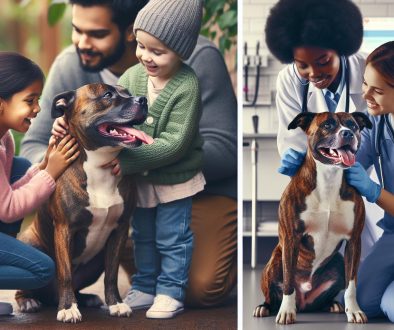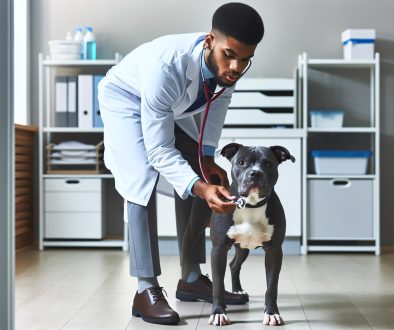Are Pit Bulls Dangerous? Unpacking Myths and Realities
When it comes to dogs, few breeds stir up as much debate as pit bulls. Are they inherently dangerous, or are they simply misunderstood? It’s a question that’s been hotly debated by dog lovers and skeptics alike. As someone who’s delved deep into the world of canines, I’ve come across compelling arguments on both sides.
The truth is, the answer isn’t black and white. While pit bulls have been involved in incidents that paint them in a negative light, there’s far more to the story. Understanding their history, temperament, and the impact of training and environment is crucial. Let’s unpack the myths and facts to get a clearer picture of where pit bulls stand in the world of dogs.
History of Pit bulls
When exploring the question “are pit bulls dangerous?” it’s essential to delve into their history. The term “pit bull” encompasses several breeds, including the American Pit Bull Terrier, but they all share a common ancestry. Traditionally, these dogs were bred for bull-baiting and later for dog fighting, activities that demanded a certain level of aggression and physical strength. When these barbaric sports were outlawed, breeders shifted focus, aiming to cultivate the American Staffordshire Terrier—a less aggressive variant of the pit bull, celebrated for traits like loyalty and affection towards humans.
Despite these efforts, pit bulls retained their reputation as fighters, a legacy that many blame for the ongoing stigma they face. This stigma is fed by reports of pit bull attacks and fatal dog attacks, which often receive widespread media coverage. However, it’s crucial to understand that not all pit bulls exhibit aggressive behavior towards other dogs or humans, and their demeanor can be significantly influenced by training, socialization, and the environment provided by their owners.
The American Veterinary Medical Association points out that breed specific laws targeting pit bulls and other breed specific legislation have done little to decrease the incidence of dog bites and dog attacks in communities. Instead, experts advocate for policies that focus on responsible ownership, better education for dog owners, and stricter penalties for those involved in the illicit world of dog fighting.
In my experience, fostering understanding and dispelling myths about pit bulls is a step forward in addressing the so-called pit bull problem. Their past may be checkered by activities that encouraged aggressive behavior, but with responsible pet ownership and proper care, many pit bulls today serve as family pets, service dogs, and loyal companions, far removed from their ancestors’ roles in dog fighting rings. It’s a testament to their adaptability and the impact that humans have on shaping the behavior of dog breeds.
Stereotypes and Misconceptions
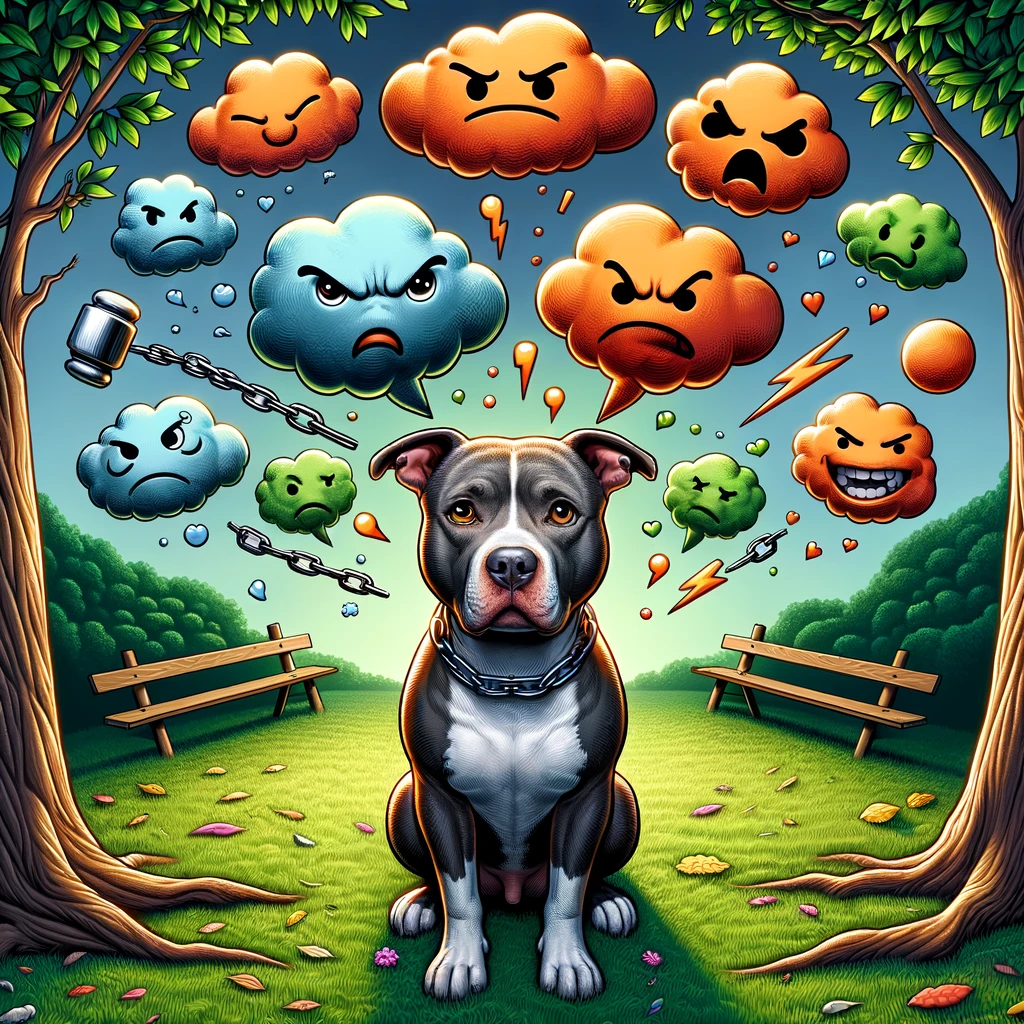
The debate surrounding whether pit bulls are dangerous can often be fueled by stereotypes and misconceptions. Here, I’ll dissect some of the common myths about pit bulls and examine how media influence shapes our perception of this dog breed.
Common Myths About Pit bulls
When discussing pit bulls, several myths seem to cloud the truth about these dogs. First and foremost is the misconception that pit bulls are inherently aggressive. Contrary to this belief, aggression isn’t a trait that’s specific to any one breed. In fact, the American Veterinary Medical Association has stated that breed-specific traits do exist, but aggression shouldn’t be counted as one for pit bulls. Many pitbulls are family pets, service dogs, and possess no more aggressive tendencies than golden retrievers or German shepherds.
Another myth is that pit bulls have a “lockjaw” mechanism that makes their bites more dangerous than those of other breeds. However, this has been debunked by canine experts who assert that pit bulls do not have any unique physical mechanism in their jaws. Additionally, while pit bulls are strong, the force of their bite isn’t significantly different from other medium and large dogs.
Many people also believe that pit bulls are more likely to attack humans than other breeds. This myth has been perpetuated by selective reporting and misidentification in reports of dog attacks. Studies and reports have shown that dog attack fatalities involve various breeds, and pit bulls, when properly raised and socialized, are no more prone to attacking humans than any other breed. Breed-specific legislation targeting pit bulls hasn’t proven to reduce the incidence of dog bites or attacks, underscoring that the problem lies not within a specific breed but with broader issues such as responsible ownership and socialization.

Media Influence on Pit bull Perception
Media reporting plays a significant role in shaping public perception of pit bulls. Often, stories about dog attacks prominently feature pit bulls, even when the breed hasn’t been accurately identified. This selective coverage has contributed to a skewed perception, making pit bulls seem more dangerous than they actually are. The narrative that surrounds pit bull-type dogs in the media is frequently laced with language that emphasizes aggression and danger, regardless of the context of the incident. This kind of reporting doesn’t just affect the perception of pit bulls; it influences policies and legislation that target all pit bull-type dogs, often unfairly.
Another aspect of media influence is the lack of stories that spotlight the positive side of pit bulls. Countless pit bull owners can share heartwarming tales of their pets’ loyalty, gentle nature, and role as beloved family members. Yet, these stories rarely make headlines, leaving a gap in public perception that’s filled with negative, fear-inducing narratives.
Understanding Pit bull Temperament
The debate surrounding whether pit bulls are dangerous often lacks nuance, focusing on isolated incidents rather than considering the broader context of the dog’s behavior and environment. In this section, we’ll delve into key aspects of pit bull temperament, aiming to provide a more balanced view of the breed.
Nature vs. Nurture Debate
The age-old question of nature vs. nurture is particularly relevant when discussing pitbulls. Breed-specific traits do exist, but they are just one piece of the puzzle. Pit bulls have been historically bred for certain tasks that may require strength and tenacity, but suggesting that these traits directly translate to aggressive behavior towards humans oversimplifies their nature. The environment in which a pit bull is raised plays a crucial role. Like any dog breed, pit bulls thrive in a loving, stable environment where they receive proper training, socialization, and care. It’s not unusual to see pit bulls being incredibly gentle and friendly when they’re raised by responsible owners.
Pit bulls as Family Pets
Many pit bull owners can attest to the breed’s capacity for love and loyalty. When raised in a nurturing environment, pit bulls often become cherished family pets. They have a playful nature and can form strong bonds with their human companions, including children. Their protective instincts can make them excellent watchdogs, though this should be guided with proper training to ensure they remain friendly with visitors and other animals. Recognizing that many pit bulls serve as beloved family pets challenges the misleading stereotype that all pit bulls are dangerous.
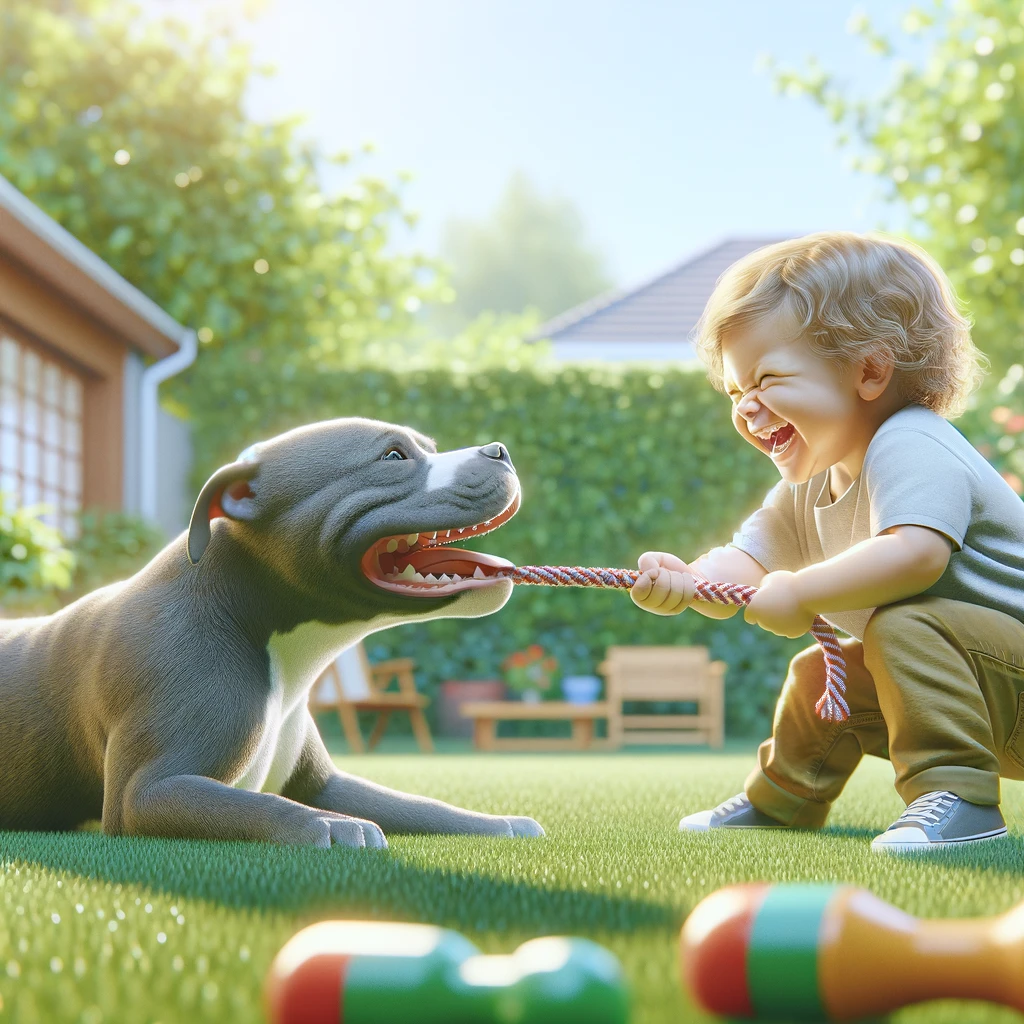
Pit bulls in Therapy Work
An often overlooked aspect of pit bull temperament is their potential for therapy work. Pit bulls with the right temperament—calm, gentle, and responsive to training—have been successful as service dogs and in animal-assisted therapy programs. Their intuitive nature can make them particularly good at providing support and companionship to individuals with disabilities or those in hospitals, schools, and nursing homes. This capacity for empathy and service further illustrates that the narrative around pit bulls being inherently dangerous is flawed. Pit bulls, like any dog breed, are capable of extraordinary kindness and utility in supportive roles.
In exploring the temperament of pit bulls, it’s clear that a one-dimensional portrayal of them as inherently aggressive is unfounded. The reality is that a dog’s demeanor is heavily influenced by their upbringing and the care they receive. Focusing on responsible ownership and understanding the breed’s needs is key to ensuring pit bulls and their human companions can enjoy a harmonious relationship.

Factors That Influence Dog Aggression
Delving into the heart of the debate on whether pit bulls are dangerous, it’s essential to consider several factors that can influence dog aggression. These elements are not exclusive to pit bulls nor any other dog breed, but they play a critical role in shaping a dog’s behavior. Understanding these factors can provide a clearer picture of the complex interplay between genetics and environment in determining a dog’s temperament.
Lack of Socialization
One of the most significant factors contributing to dog aggression, including in pit bulls, is the lack of proper socialization. Dogs that are not exposed to different people, dogs, environments, and experiences during their critical period of socialization, typically between three and fourteen weeks of age, may develop fearful or aggressive behaviors towards unfamiliar situations as they grow. This underscores the importance of early socialization, where pit bull owners and owners of any dog breed should actively introduce their pets to a wide range of stimuli in a controlled and positive manner. Dogs that are well-socialized are less likely to exhibit aggressive behaviors towards other dogs, other animals, or other pit bulls, as they’re more comfortable and less reactive in various situations.
Neglect or Abuse
It’s heartbreaking but true that neglect or abuse can lead to aggressive behaviors in dogs. This reaction is not restricted to pit bulls but can be observed in other dog breeds as well. Dogs that have experienced harsh treatment, lack of proper care, or have been used in dog fighting operations may show signs of aggression as a defense mechanism. Pit bull advocates often highlight the breed’s unfortunate association with dog fighting, which has contributed to a skewed perception of their temperament. However, it’s critical to recognize that aggression resulting from neglect or abuse is a consequence of the environment and not an inherent trait of the pit bull breed.

Owner Responsibility and Training
The role of a dog owner cannot be understated in shaping a dog’s behavior. Irresponsible owners, who fail to invest time in proper training, or worse, encourage aggressive behavior, contribute significantly to the so-called pit bull problem. Effective training and responsible ownership are crucial in preventing dog attacks and promoting a positive temperament. Pit bull owners, like other dog owners, need to provide consistent leadership, training, and care, ensuring their dogs understand acceptable behaviors. Breed-specific laws have been debated extensively, but the focus should be on the accountability of the dog owner rather than on the breed itself. Properly trained and cared for, most pit bulls, like other dog breeds, can be loving, loyal, and gentle family pets.
Understanding these factors helps paint a more nuanced picture of the issue at hand. It’s not about labeling pit bulls or other breeds as inherently dangerous but recognizing the complex variables that influence a dog’s behavior. Whether talking about American pit bull terriers, German shepherds, or golden retrievers, the emphasis should be on how dogs are raised, trained, and treated by their owners.
The Importance of Responsible Ownership

As we delve deeper into the discussion about whether pit bulls are dangerous, it’s essential to highlight the pivotal role of responsible ownership. My exploration reveals that the behavior of pit bulls, like any dog breed, significantly depends on how they’re raised, trained, and cared for by their owners.
Breed-Specific Legislation
Breed-specific legislation (BSL) targets specific breeds deemed dangerous, often including pit bulls, in an attempt to reduce dog attacks. However, it’s widely acknowledged among experts, including the American Veterinary Medical Association, that BSL is not the most effective solution. For instance, President Barack Obama’s stance ten years ago emphasized that breed-specific bans are largely ineffective and waste public resources since dogs of any breed can become dangerous if raised to be aggressive.
The reality is, breed-specific laws do not address the root causes of dog aggression—largely, irresponsible ownership and lack of proper training. Instead, they perpetuate a cycle of misunderstanding and fear. By focusing on breed, we overlook the fact that aggressive behavior in dogs is not confined to pit bulls or any other breed but can be found across the board. This underscores why responsible ownership is critical.
Advocacy and Education
Raising awareness and educating the public about pit bulls and dog ownership is crucial to changing perceptions and reducing incidents of aggression. Advocacy groups play a significant role in dispelling myths surrounding pit bulls, emphasizing that they are not inherently aggressive. These organizations advocate for a more informed approach that recognizes the multifaceted nature of dog behavior, focusing on the individual dog’s history, temperament, and owner’s responsibility rather than stereotyping entire breeds.
One of the key points I’d like to highlight is the need for more comprehensive education for potential pit bull owners. Understanding the needs, temperament, and the proper way to handle and care for pit bulls can lead to better-informed owners who are capable of raising well-behaved, sociable dogs.
Training and Socialization Tips
Training and socialization are perhaps the most crucial aspects of responsible dog ownership, especially for pit bull owners. Early socialization helps ensure that pit bulls are comfortable around other dogs, pets, and people, significantly reducing the likelihood of aggressive behavior. Some effective tips for pit bull owners include:
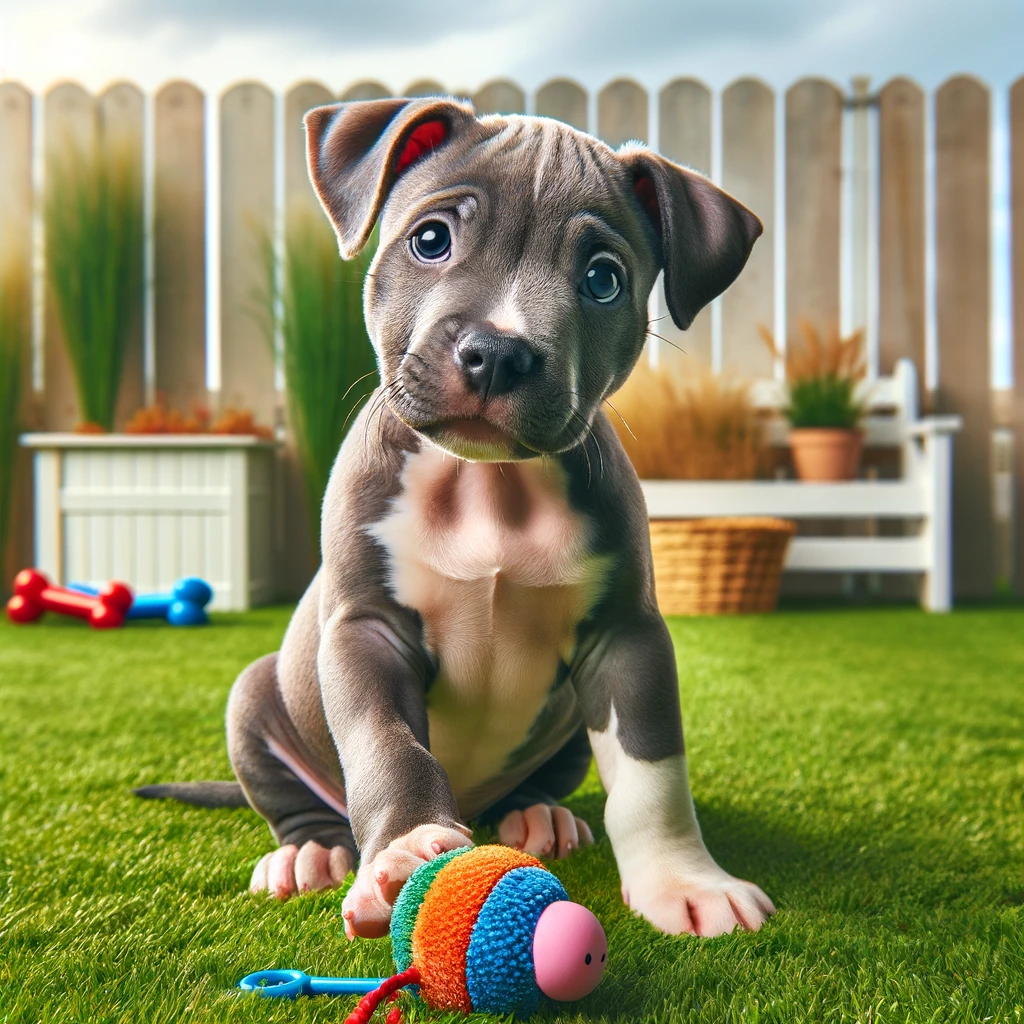
- Start Early: Begin socialization and training as early as possible. Puppies are more adaptable and open to new experiences.
- Positive Reinforcement: Use treats, praise, and love to reward good behavior. Positive reinforcement encourages dogs to repeat the behavior you want.
- Consistency is Key: Be consistent with commands and rules. Consistency helps your pit bull understand what is expected of them.
- Professional Training Classes: Consider enrolling your pit bull in professional training classes. These can be beneficial for both the dog and the owner, providing tools and techniques for effective training.
Training and socialization are ongoing processes that require time, patience, and dedication. However, the rewards of a well-behaved, sociable pit bull are well worth the effort. As pit bull owners, we play a pivotal role in shaping our dogs’ behavior. By focusing on responsible ownership, training, and socialization, we can help ensure that pit bulls are seen for what they truly can be: loyal, affectionate members of our families and communities.
Conclusion
I’ve explored the complex nature of pit bulls, shedding light on the fact that they’re not inherently dangerous. It’s clear that factors like training, socialization, and an owner’s responsibility play pivotal roles in a pit bull’s behavior. The emphasis on responsible ownership cannot be overstated—it’s the cornerstone of nurturing any dog into a well-behaved companion. By advocating for education and dispelling myths, we can change the narrative around pit bulls. Remember, early training, positive reinforcement, and consistency are key. Let’s not judge a dog by its breed but by the love and training it receives from its owner. Together, we can promote a world where pit bulls are seen as the loyal and affectionate family members they truly can be.
Frequently Asked Questions
What to do if a pit bull attacks you?
If a pit bull attacks you, try to remain calm and avoid making eye contact, which can be perceived as a challenge. Protect your face, throat, and chest. Use an object, like a bag or jacket, between you and the dog if possible. After the situation is safe, seek medical attention and report the incident to local authorities.
Why are pit bulls so clingy?
Pit bulls are inherently affectionate and loyal to their owners, often showing an eagerness to maintain close proximity. This breed’s desire for companionship and their strong bond with family members can manifest as clingy behavior, especially if they sense their owners are leaving or are left alone, potentially leading to separation anxiety.
Why do pit bulls turn on their owners?
Pit bulls, like any dog, may display aggressive behavior when they experience neglect, lack of affection, or improper handling from their owners. Behavioral issues in pit bulls are often a reflection of owner responsibility rather than the breed itself. Proper training, socialization, and care can mitigate aggression in pit bulls.
How common are pit bull attacks?
Although pit bulls have been involved in a significant number of attacks compared to other breeds, it’s essential to understand context. The statistics do not account for factors like the dog’s upbringing, training, or the circumstances of the incident. Responsible ownership and proper socialization play crucial roles in preventing aggressive behavior.
Why are pit bulls banned?
Pit bull bans in some areas stem from a combination of factors, including high-profile attacks attributed to the breed, perceived aggression, and their association with dog fighting. However, critics of breed-specific legislation argue that these bans do not effectively address the root causes of dog aggression, such as irresponsible ownership and lack of socialization.

Mandy has lived with pitbulls her whole life, and she has amassed a wealth of experience and knowledge about these magnificent animals. Having had the pleasure of owning and caring for numerous pitbulls over the years, she has come to understand their unique characteristics, behaviors, and needs. Read more


